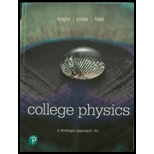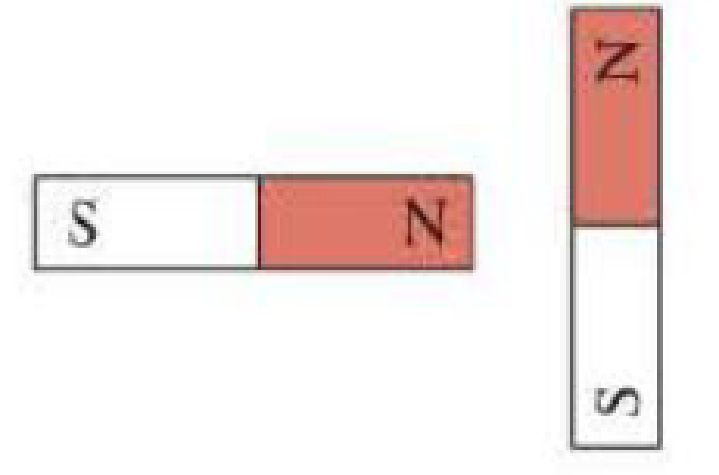
Concept explainers
In Figure Q24.1, suppose the magnet on the right is fixed in place and the magnet on the left is free to pivot about its center. Will the magnet on the left start to rotate? If so, will it initially rotate clockwise or counterclockwise?
Figure Q24.1

To check: the left side magnet’s rotation and find the initial rotating direction of this magnet.
Answer to Problem 1CQ
The left side magnet starts rotating and it is rotating in the direction of clockwise.
Explanation of Solution
Given data:
Refer Figure Q24.1 in the textbook for two magnet arrangement.
Consider that the north pole of the magnet is expressed as “N” and the south pole of the magnet is expressed as “S”.
Explanation:
Consider the same poles of magnets repel each other and opposite poles of magnets attract each other.
The magnet, which is placed in the left side, will rotate in direction of clockwise because two N poles of the two magnets repel each other and the N pole of left magnet gets attracted by the S pole of right magnet. Then, the left magnet’s S pole is attracted to the N pole of the fixed magnet.
Therefore, the left magnet gets rotating due to opposite poles attraction and same poles repel.
Conclusion:
Thus, the left side magnet starts rotating and it is rotating in the direction of clockwise.
Want to see more full solutions like this?
Chapter 24 Solutions
College Physics: A Strategic Approach (4th Edition)
Additional Science Textbook Solutions
Cosmic Perspective Fundamentals
Physics for Scientists and Engineers: A Strategic Approach, Vol. 1 (Chs 1-21) (4th Edition)
Introductory Chemistry (6th Edition)
Biology: Life on Earth (11th Edition)
Campbell Essential Biology (7th Edition)
Applications and Investigations in Earth Science (9th Edition)
- An object is placed 24.1 cm to the left of a diverging lens (f = -6.51 cm). A concave mirror (f= 14.8 cm) is placed 30.2 cm to the right of the lens to form an image of the first image formed by the lens. Find the final image distance, measured relative to the mirror. (b) Is the final image real or virtual? (c) Is the final image upright or inverted with respect to the original object?arrow_forwardConcept Simulation 26.4 provides the option of exploring the ray diagram that applies to this problem. The distance between an object and its image formed by a diverging lens is 5.90 cm. The focal length of the lens is -2.60 cm. Find (a) the image distance and (b) the object distance.arrow_forwardPls help ASAParrow_forward
 College PhysicsPhysicsISBN:9781305952300Author:Raymond A. Serway, Chris VuillePublisher:Cengage Learning
College PhysicsPhysicsISBN:9781305952300Author:Raymond A. Serway, Chris VuillePublisher:Cengage Learning College PhysicsPhysicsISBN:9781285737027Author:Raymond A. Serway, Chris VuillePublisher:Cengage Learning
College PhysicsPhysicsISBN:9781285737027Author:Raymond A. Serway, Chris VuillePublisher:Cengage Learning Principles of Physics: A Calculus-Based TextPhysicsISBN:9781133104261Author:Raymond A. Serway, John W. JewettPublisher:Cengage Learning
Principles of Physics: A Calculus-Based TextPhysicsISBN:9781133104261Author:Raymond A. Serway, John W. JewettPublisher:Cengage Learning
 Physics for Scientists and Engineers, Technology ...PhysicsISBN:9781305116399Author:Raymond A. Serway, John W. JewettPublisher:Cengage Learning
Physics for Scientists and Engineers, Technology ...PhysicsISBN:9781305116399Author:Raymond A. Serway, John W. JewettPublisher:Cengage Learning Physics for Scientists and Engineers: Foundations...PhysicsISBN:9781133939146Author:Katz, Debora M.Publisher:Cengage Learning
Physics for Scientists and Engineers: Foundations...PhysicsISBN:9781133939146Author:Katz, Debora M.Publisher:Cengage Learning





